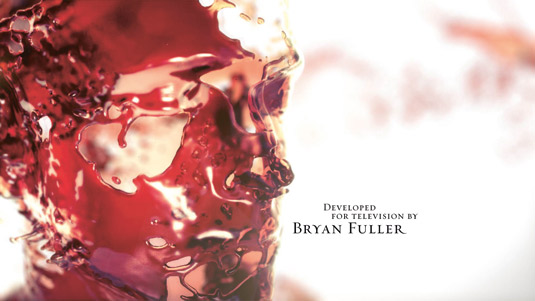The future of TV credits
As the new 'golden age of TV' continues apace, titles sequences are becoming ever more ambitious, innovative and eye-catching.
While much is written about the evolution of cinema, in the last two decades it's actually the world of broadcast that has changed beyond all recognition.
Technically, there have been sweeping changes in the way shows are shot, post-processed and enhanced with digital effects. And creatively shows have taken their cue from film to offer something far more polished, and from literature to explore stories more complex and mature.
For a perfect indicator of these changes, look no further than the introductory titles sequences that now preface the leading crop of American and British TV shows.
Changing the game
"The real game changers were places like HBO and Showtime, who have a different business model," explains Peter Frankfurt, creative director and co-founder at Imaginary Forces, a design agency whose credits include the titles for Mad Men, Boardwalk Empire and multiple high-profile movie intros.
"For them it doesn't matter if they take screen time away from advertisers, so they could spend longer on an introductory sequence. They also wanted to differentiate themselves from regular broadcast television, and so wanted something more cinematic. Really, the limiting factor has never been budget. Rather it's about 'real estate', or screen time," Peter reveals.

The creative developments in broadcast contrast neatly with those over in Hollywood. In the 1950s and 1960s moviegoers were treated to hugely influential movie titles work from the likes of Saul Bass, Robert Brownjohn, Maurice Binder, and Stephen Frankfurt (father of Peter), but soon ambitious intros largely fell out of favour, until a resurgence in 1995 triggered by Se7en.
The spectacular opener was designed by Kyle Cooper and produced by Peter Frankfurt while at R/GA, and as Peter notes: "Begat a million bastard children."
Daily design news, reviews, how-tos and more, as picked by the editors.
"Now, however, with some of the big action movies we do – Transformers, Pacific Rim and so on – you're usually creating a presentation card at the front and then the titles are actually at the end. It's no longer a prologue and it's not so interesting. TV is now the place where the more interesting work is being done."
Broadcast set to blaze a trail
"Television is carrying the title design torch," agrees Will Perkins, senior editor at the Art of the Title website. "While elaborate opening credits have fallen out of favour in mainstream Hollywood, a good title sequence is almost expected by TV viewers at this point. Like any art form there's influence from past work, but modern title design is building upon it rather than simply drawing from it."
But while the value of titles that both grab the attention and help establish a brand identity for a TV show are now recognised, broadcast sometimes carries its own limitations.
"When it comes to films, the movie trailer will have done the work and the audience is already there, so there's more freedom with credits to explore the story, reference themes and period, and so really set the mood for the audience," explains Nic Benns, creative director at Momoco.

The design studio's work spans film and TV on both sides of the Atlantic, so Benn is well placed to comment on the differences. "There does seem to be more time available and certainly more of a development budget with US productions," he says. "But there are also more executive producers with those networks, so more rounds of notes to take onboard."
Nevertheless, the same general upwards trend that's driving this new golden age of television also continues to push TV networks to work ever harder to produce unique, eye-catching, brand-enhancing titles sequences.
"It not only opens up more creative avenues, it also necessitates a closer working relationship between producers and designers," says Will. "And in the case of shows like Game of Thrones and American Horror Story that relationship is an ongoing one."
And the title goes to…
Elastic's opener for Game of Thrones, with its stylised all-CG approach and continuously evolving nature may indeed hint at where things are headed for TV titles, particularly as the likes of Netflix and Amazon keep changing the way shows are delivered to our screens.
"With so much energy being trained on these titles sequences-slash-brandings for emerging shows and properties I think we'll see more and different uses of computer graphics, with interesting combinations of media – live action and CG, CG and stop motion, and whatever else," says Peter.
"Interactive titles are also a possibility. As movies become almost ancillary, it's in broadcast where we'll continue to see the most interesting work." Watch some award-winning title sequences at Art of the Title.
Words: Mark Ramshaw
This article first appeared in 3D World issue 186.
Liked this? Then you'll love these:

The Creative Bloq team is made up of a group of art and design enthusiasts, and has changed and evolved since Creative Bloq began back in 2012. The current website team consists of eight full-time members of staff: Editor Georgia Coggan, Deputy Editor Rosie Hilder, Ecommerce Editor Beren Neale, Senior News Editor Daniel Piper, Editor, Digital Art and 3D Ian Dean, Tech Reviews Editor Erlingur Einarsson, Ecommerce Writer Beth Nicholls and Staff Writer Natalie Fear, as well as a roster of freelancers from around the world. The ImagineFX magazine team also pitch in, ensuring that content from leading digital art publication ImagineFX is represented on Creative Bloq.
